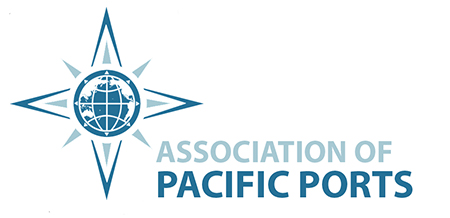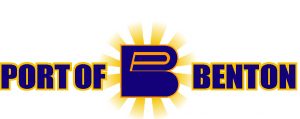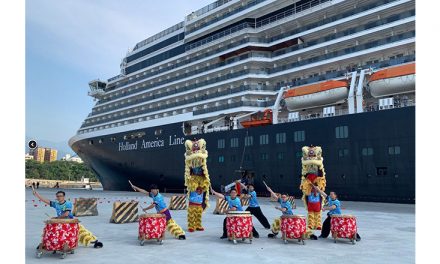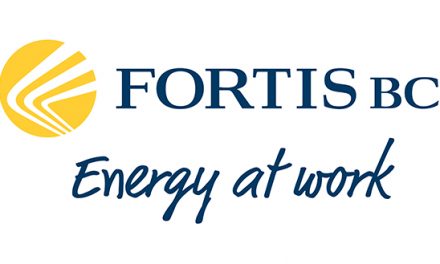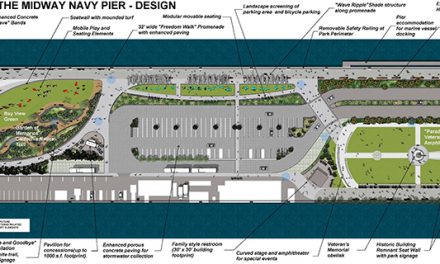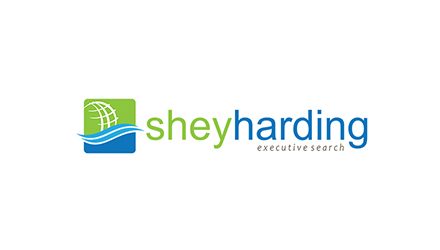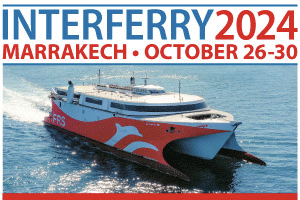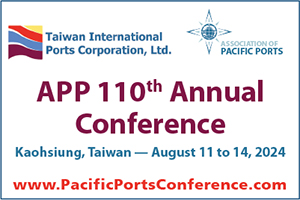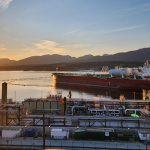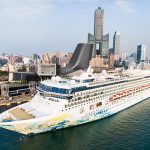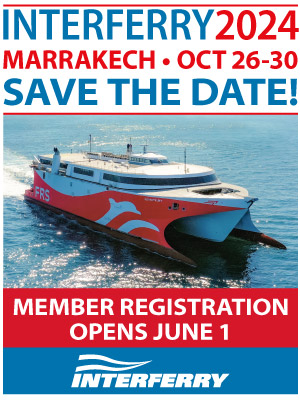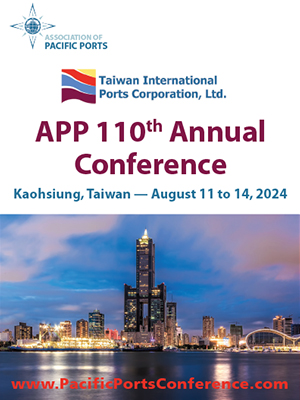At the most recent APP Board of Directors meeting, Members provided activity updates, including management of COVID-19 impacts and ongoing projects. Special thanks to Jadene Villagomez, with the Commonwealth Ports Authority, Northern Mariana Islands for her excellent note-taking!
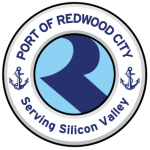 Port of Redwood City
Port of Redwood City
Lorianna Kastrop, Commission Chair, Port of Redwood City reported that, while tonnage and revenue were down by about 20 per cent due to COVID-19, all points in the supply chain are operating at 90 per cent of pre-COVID numbers and she is optimistic that activity will rebound. Focusing on positive developments for the Port over the past year, Kastrop reported that they have received a $1.8-million grant from the Department of Homeland Security. In addition, they completed a ferry feasibility and economic impact analysis for a future public ferry terminal.
Other activity updates included:
- The Port is now home to a new commercial fishing business that sells fresh fish at the dock to the public, something that has become with quite popular with the local community, generating new visitors to the port.
- Because many public spaces and activities were shut down due to COVID-19, the Port partnered with the City to host a circus that people were able to watch from their car. They also hosted drive-in movies during the summer. Fundraising initiatives provided subsidized tickets for the less fortunate.
- The Port is activating a new barbecue and picnic area that will be available for the public once the pandemic is over.
- To help staff cope with the pandemic, the Port implemented several work / life balance benefits, including bringing in a personal trainer. They also implemented an alternative work week, allowing staff to take every other Friday off.
- The Port partnered with City Library on a virtual maritime tour initiative where port staff and commissioners read stories in both English and Spanish for children.
Of special note, Kastrop was pleased to report the Port had received the AAPA top overall award for communications excellence for their website modernization.
Republic of Marshall Islands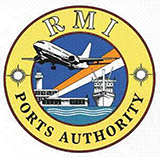
Thomas Madison, Manager for the Seaport Division of the RMI Ports Authority, reported that port entry restrictions continue due to COVID-19. Notices to Mariners have been issued that advise on the closure of RMI’s borders. He expects they will stay closed for several months to come. Currently, RMI’s repatriation program includes a two-week quarantine on Hawaii and then another three-week quarantine on RMI. Madison noted that RMI had found four cases of the virus last month but the patients have since recovered and the Island is currently COVID-free.
Madison also reported that the World Bank’s Capital Improvement Program for Ports has slowed down because of difficulties in getting outside consultants over. While they are working virtually with consultants, he is hopeful that by the end of the year, the Island will open back up. “By February/March, 2022, we’re hoping we’ll be ready to start on design and infrastructure construction plans,” he said.
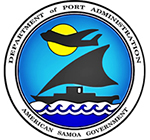 American Samoa Port Administration
American Samoa Port Administration
Deputy Director Falenaoti Loi-On Fruean provided an update on activities at the Port of Pago Pago, including the recent appointment of Chris King to the role of Director (‘acting’ until formally confirmed). With the borders closed since March 2020, American Samoa is COVID-free at this time. Like RMI, a repatriation of residents is underway. A flight is scheduled for February that will bring 160 passengers from Hawaii. The residents, who have been waiting for a year to return, will be required to quarantine for an additional 14 days after their 10-day quarantine in Hawaii. “We’ve been very lucky and continue to be COVID-free,” she said, noting that six cases were identified aboard an incoming vessel, but the crew remained on board and health safety measures were implemented by Public Health. Container ship visits continue to be steady and moderate with no interruptions in the delivery of supplies. Fale expressed best wishes to ports in the APP family who were being impacted by the pandemic.
Commonwealth Ports Authority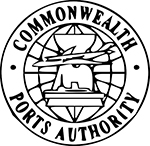
During the last update from Rodney Taisacan, Port of Saipan Manager in August 2020, he had noted challenges with testing crew members for COVID-19. Since then, the government has recalled their procedure and at this time, there is no testing for crew. While revenue last month was down 26 per cent, Taisacan reported that cargos are still being received from Guam, the U.S., and Asia. CMNI continues to be COVID-free with requirements for a minimum five-day quarantine for anyone coming onto the Island.
Taisacan further provided an update on port projects, including paving and extension of docks. The biggest challenge at present is sourcing funding for the projects.
Port of Benton
Robert Larson, Commissioner for the Port of Benton reported that vaccinations have started but safety protocols continue at the Port which covers a Tri-City area (Benton, Prosser and Richland), and includes the Benton Municipal Airport.
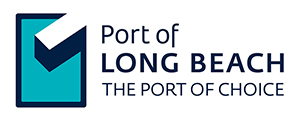
Port of Long Beach
Commissioner Bonnie Lowenthal reported that the Port of Long Beach has been doing quite well. So much so that they are faced with a shortage f
or container storage. The past few months have been the best ever for the Port however they have seen challenges in getting containers off the dock. She believes it will ease off within a couple of weeks and at that time, they will be looking to improve their systems.
The new bridge between Long Beach and San Pedro is now complete and is a huge success, providing for a much faster route for commuters and truck transportation. At a cost of $1.5 billion, the Port is working with the State Transportation Division to find ways to forgive some of that funding. Sadly, there has already been one suicide on the bridge, so the Port is considering the installation of suicide barriers.
Regarding COVID-19, a facility has been set up in the Harbor District to do testing and have distributed massive amounts of personal protective equipment. Many employees are working from home but, noting the size of the Port, Lowenthal noted planning for the future continues regarding construction projects.
In addition, Lowenthal has been pleased with the education component of the Port over the years. This includes the development of a high school program – the Academy of Global Logistics – which had 48 graduates last year. The program focuses on supply chain logistics and engineering and plans are underway to expand the program to another high school near the Port.
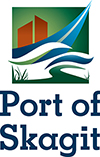 Port of Skagit
Port of Skagit
Patsy Botsford-Martin, Executive Director for the Port of Skagit, reported that some areas of the Port were doing well and others, not so much. The aerospace industry has been hit hard as have distillers and brewers in the value-added agriculture industry who have been challenged with the lack of retail. Areas that have seen growth and continue to be busy include flour mills and the maritime sector, especially with boat building. The airport, which specializes in business aviation with small planes, has just had a new apron built and they are scheduled to build another one this construction season along with new hangers.
Regarding COVID-19, Botsford-Martin reported that they have staggered the hours of staff so that only about one-third are in the offices at any one time to limit potential exposures. She looks forward to the time when the borders are open and regular business can resume.
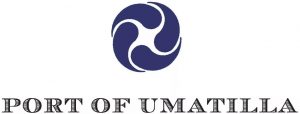 Port of Umatilla
Port of Umatilla
Kim Puzey, General Manager for the Port of Umatilla reported that the Port has been doing well in terms of real estate, having recently sold over 100 acres of property for two more sites for data centers. They have also been working with the local community college on port development issues – so a high school graduate can go to the college for two semesters to get a certificate to work at the centers. Puzey noted that these graduates would be making six-figure salaries within two years.
Other areas of the port, for example, food processing, have been challenged. Vegetable processing has been hit hard with the pandemic given that they cannot work remotely. Umatilla is still experiencing high levels of cases and to address this, the Port provided commissioners with electronics to be able to meet remotely. The office has been segregated so that staff are isolated from each other through different schedules. Overall, the port is in a better cash position than it has been in some time.
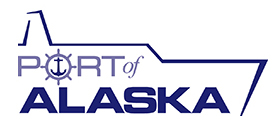 Port of Alaska
Port of Alaska
Port of Alaska Director Stephen Ribuffo echoed reports from others that protocols for COVID-19 have been embraced by tenants and have been very cooperative. Port staff have been working from home about 50 per cent of the time and, while it has been working well, everyone is anxious to get back to normal.
Volumes at the port in 2020 were flat to slightly up. With break bulk, dry bulk, cruise and cargo as the main activities, Ribuffo reported that the lack of cruise resulted in a loss of about five per cent of their overall business. Cargo had dipped at the outset of the pandemic but has since recovered and have not missed a single port call due to COVID albeit there were some weather-related challenges. Working with the Port of Portland, where both major ocean carriers (Matson and Tote) sail out of, Ribuffo noted good communications to ensure no adverse issues.
The petroleum industry has seen a huge boom this year for the Port. Total annual petroleum volume numbers for 2020 matched the volume of 2019 by the end of September. Contributing circumstances included the bump in refined petroleum for jet fuel with passenger airplanes taking on more cargo, especially with aircraft coming from Europe stopping in Anchorage to refuel.
Ribuffo provided an update on the port modernization program currently underway which is addressing the corrosion issue of docks that are over 50 years old. The dock demolition and replacement project, costing about $1.5 billion, will eventually see the replacement of the entire dock infrastructure at the Port. With challenges in raising funds, Ribuffo noted they were taking it a step at a time. The first portion is to reconstruct a new joint-use petroleum and cement terminal dock with the first-year plans having been completed on time and under budget. He is expecting it to be finished by the end of 2021. The next step will be to tackle the cargo docks which will have to be done in a sequence fashion to allow activity to continue (noting that 50 per cent of all cargo coming into Alaska goes through their docks).
 Port of Newport
Port of Newport
Paula Miranda, General Manager, Port of Newport, reported that it has been challenged in their efforts to solicit cargo business but, given they have a large recreation sector with one of the largest marinas on the Oregon coast as well as a large RV park and many have turned to these activities during the pandemic, have been extremely busy. Commercial fishing has also been extremely busy – Newport has the largest commercial fishing fleet in the state of Oregon and currently, it is dungeness crab season. While that has kept fishermen busy, there have been challenges with many of the restaurants closed.
Miranda further reported that they have plans to redo many of their docks, however she noted that funding was difficult for projects related to commercial fishing docks rather than cargo related. While the Port was successful in getting a small grant to replace a pier on one of their docks, Miranda is working hard to source funding for additional work. Overall, however, Miranda felt they were doing well in comparison to other ports.
Associate Member Updates
In a new practice for the APP, Associate Members were invited to provide updates and brief remarks.
- Jeannie Beckett, The Beckett Group, offered assistance to those ports who were pursuing grants for infrastructure projects. She advised that IMFRA (related to highways) and BUILD grant applications were being accepted now through to April.
- Joe Carrillo, SSA Marine focused on activities within the Northern California region, handling cars, breakbulk and bulk and many different cargos, as well as new business in Eureka to export woodchips. Carrillo reported that the car business took a hit last May through July but has since rebounded. He also noted that tariffs on steel had an impact on a steel rail project. Changes to operations because of COVID included added costs due to the purchase of personal protective equipment as well as limits imposed on passenger vans and shift workers. He also noted that SSA Marine has been developing a strategy that has seen 64 zero-emission vehicles and equipment into the ports.
- Mike Fisher, Northern Economics, described that company’s work in the North Pacific region, including feasibility studies, business plans and tariff studies. While located in Anchorage, Alaska, Mike noted their work takes them all over North America.
- Steven Gray, Moffat and Nichol, was able to provide insights into the cruise industry, noting that some lines are considering shifting into the Florida market where they can sail to private destinations. He also offered assistance to ports who were interested in pursuing grants.
- Sarah Pautzke, Lynker Technologies, also offered assistance with grant proposals. As a predominantly federal contractor, Lynker works throughout the U.S. – Alaska, the West Coast, Hawaii, the Mariana Islands and American Samoa where they were successful in securing a grant for their infrastructure improvement program. Additional activities included a lot of work related to aquaculture; participation in developing the Endangered Species Act Biological Assessment for Saipan; an aquaculture feasibility study for American Samoa; and support for expanding for aquaculture and mariculture (i.e., freshwater aquaculture) in the Gulf of Mexico, doing assessments for the Endangered Species Act and Mammal Protection Act. Of special note, Lynker has been providing great support to the community through initiatives that, for example, provide lunches to school children.
- Jay Rainaldi, Yardi Solutions, described the company’s property management software programs for both commercial and residential, noting that a significant trend for ports was focusing on real estate management. Upcoming products included tariff software as well as harbor and marina management software.
- Chris Richardson, BNAC Environmental Solutions, reported that business has been very good given the ongoing trend toward ports looking for ways to improve their environmental performance. Products include non-toxic (but highly effective) heavy-duty cleaners, hydraulic fluids and oil filtration units as well as ecological absorbents to manage spills.
- Brian Tuomi, Nautical Consulting International, focuses on vessel traffic management, including the establishment of courses as well as getting standards put in place. The company also offers risk assessments for ports.
Special guest, Bruce Lambert, Gateway Director, Pacific Northwest and Alaska, Maritime Administration, reported that colleague Eric Shen, Director of the Mid-Pacific Gateway Office has now left and Bruce and Brian Hill are managing the office. He reported on a number of grants coming out and he is more than happy to help ports and organizations sort through the process.
